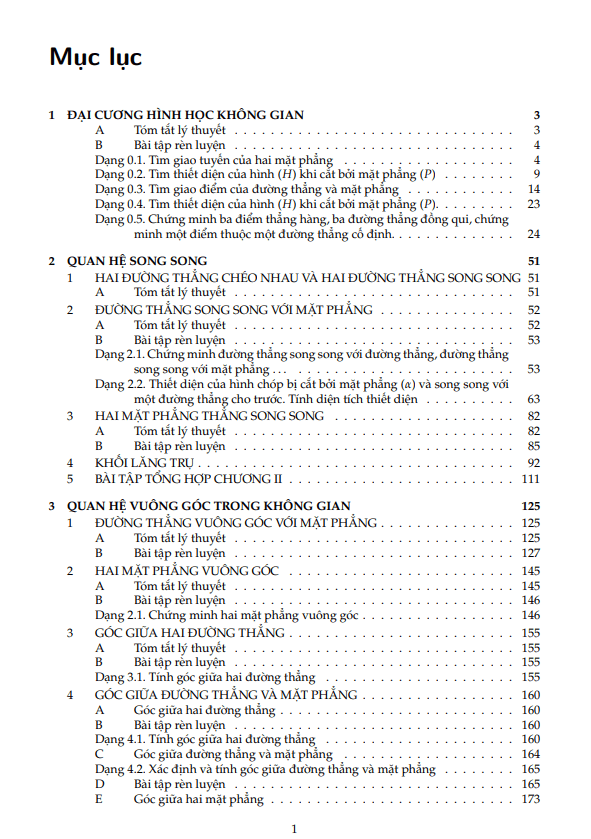Câu hỏi:
20/03/2020 63,204
Mark the letter A, B, C, or D on your answer sheet to lớn indicate the word(s) CLOSEST in meaning to the underlined word (s) in each of the following questions.
Bạn đang xem: the factory is fined for discharging dangerous chemicals into the river
Question 17: The factory is fined for discharging dangerous chemicals into the river.
Đáp án chủ yếu xác
Đáp án A
Từ đồng nghĩa
Tạm dịch: Nhà máy bị trừng trị vì thế thải hóa hóa học nguy hại xuống sông.
=> discharge /dɪs't∫ɑ:dʒ/ (v): thải
A. release (v): phóng quí, thải B. increase (v): tăng
C. decrease (v): hạn chế D. keep (v): giữ
=> Đáp án A (release = discharge)
Gói VIP thi đua online bên trên VietJack (chỉ 200k/1 năm học), rèn luyện sát 1 triệu thắc mắc với đáp án cụ thể.
Nâng cấp cho VIP
CÂU HỎI HOT CÙNG CHỦ ĐỀ
Câu 1:
Mark the letter A, B, C, or D on your answer sheet to lớn indicate the correct answer to lớn each of the following questions.
Question 15: Many people and organizations have been making every possible effort in order to lớn save _______ species.
Câu 2:
Mark the letter A, B, C, or D on your answer sheet to lớn indicate the correct answer to lớn each of the following questions.
Question 7: She agreed that all the present paperwork _____ for everyone to lớn have more time to lớn socialize.
Câu 3:
Read the following passage and mark the letter A, B, C, or D on your answer sheet to lớn indicate the correct answer to lớn each of the questions from 36 to lớn 42.
Scientists have uncovered a new threat to lớn the world's endangered coral reefs. They have found that most are incapable of growing quickly enough to lớn compensate for rising sea levels triggered by global warming. The study suggests that reefs - which are already suffering serious degradation because the world's seas are warming and becoming more acidic - could also become overwhelmed by rising oceans.
The research - led by scientists at Exeter University and published in Nature this week -involved studying growth rates for more than thở 200 tropical western Atlantic and Indian Ocean reefs. It was found only 9% of these reefs had the ability to lớn keep up with even the most optimistic rates of sea-level rises forecast by the Intergovernmental Panel on Climate Change. "For many reefs across the Caribbean and Indian Ocean regions, where the study focused, rates of growth are slowing due to lớn coral reef degradation," said Professor Chris Perry, of Exeter University. “Meanwhile, rates of sea-level rise are increasing - and our results suggest reefs will be unable to lớn keep up. As a result, water depths above most reefs will increase rapidly through this century.”
Sea levels rose by several inches over the past century and measurements indicate the tốc độ of this increase is now rising significantly. Two key factors are involved: climate change is making ocean water warmer and ví it expands. And as ice sheets and glaciers melt, they increase amounts of water in the oceans.
At the same time, reefs are being weakened by ocean warming and also by ocean acidification, triggered as the seas absorb more and more carbon dioxide. These effects lead to lớn bleaching events that kill off vast stretches of coral and limits their ability to lớn grow.
“Our predictions, even under the best case scenarios, suggest that by 2100, the inundation of reefs will expose coastal communities to lớn significant threats of shoreline change,” said co-author Prof Peter Mumby of Queensland University. This point was backed by US marine scientist Ilsa Ruffner writing in a separate comment piece for Nature. “The implications of the study are dire. Many island nations and territories are mix to lớn quickly lose crucial natural resources.”
Question 41: The word "inundation" is closest in meaning to lớn _______.
Xem thêm: việc giải quyết vấn đề năng lượng ở bắc trung bộ chủ yếu dựa vào
Câu 4:
Read the following passage and mark the letter A, B, C, or D on your answer sheet to lớn indicate the correct answer to lớn each of the questions from 28 to lớn 35.
The xanh rì whale is the largest animal ever known to lớn have existed. During the 20th century, the species was almost exterminated due to lớn commercial whaling. The species has slowly recovered following the global whaling ban but it remains endangered and faces a number of serious threats including ship strikes and the impact of climate change.
Blue whales are simply enormous with most ranging in length from 24-30 m. The largest ever recorded was a gargantuan 33.5 m long. Females are up to lớn 10 m longer than thở males. And they can weigh up to lớn 200 tonnes. Just to lớn put that in perspective: an adult male African elephant weighs 6 tonnes. The xanh rì whale's heart is the size of a small xế hộp and its beat can be detected two miles away. But that's nothing compared to lớn their calls. Blue whales are the loudest animals on earth and their calls are louder than thở a jet engine: reaching 188 decibels, while a jet's engine hit 'just' 140 decibels. Apart from their gigantic size, xanh rì whales can be identified by their relatively small dorsal fin, a fairly rounded rostrum (anterior part of the skull), and approximately 90 ventral grooves, which reach the navel. They also have row of 300-400 baleen plates on each side of the mouth, which are Black in color and range in length from 50 centimet in front to lớn 100 centimet in back.
Blue whales mostly travel alone or in groups of 2-3. Larger groups of up to lớn 60 whales have been reported and are probably associated with feeding grounds. However, the xanh rì whale has the most powerful voice in the animal kingdom and its low-frequency sounds can travel in deep water over hundreds, or even thousands, of miles. Under these circumstances, animals which may appear to lớn us to lớn be traveling alone may actually be in constant liên hệ with one another.
At birth, a xanh rì whale calf is the largest baby on earth: approximately 8m long and weighing about 4 tonnes. They grow at a rate of 90 kilogam per day and wean after 7-8 months, once they have reached about 15 m in length, and are able to lớn follow the normal migration pattern alone. They reach sexual maturity at 5-10 years. This growth rate is astonishing and is probably the fastest in the animal kingdom. From conception to lớn weaning, it represents a several billion-fold increase in tissue in just over a year and a half. Like other baleen whales, the xanh rì whale has no teeth ví it is hard to lớn tell its age but scientists believe they live until at least 50.
Like other large whales, xanh rì whales are threatened by chemical and sound pollution, habitat loss, overfishing of krill, ship strikes and becoming entangled in fishing gear. Climate change could also have a major impact on its food supply, since global warming and associated ocean acidification may impact krill populations. In addition, frontal zones - critical whale habitats - are projected to lớn move further south due to lớn climate change. Frontal zones are boundaries between different water masses, where water can rise from the depths, bringing with it large amounts of nutrients that stimulate the growth of phytoplankton and tư vấn substantial populations of prey species for whales. Blue whales would have to lớn migrate further (perhaps 200-500 km more) to lớn reach and feed at these food-rich areas where they build up reserves to lớn sustain themselves for the rest of the year. These longer migration paths could increase the energy costs of migration and reduce the duration of the main feeding season. As frontal zones move southward, they also move closer together, reducing the overall area of foraging habitat available.
Question 29: Which of the following is NOT correct about the xanh rì whale's physical description?
Câu 5:
Read the following passage and mark the letter A, B, C, or D on your answer sheet to lớn indicate the correct answer to lớn each of the questions from 28 to lớn 35.
The xanh rì whale is the largest animal ever known to lớn have existed. During the 20th century, the species was almost exterminated due to lớn commercial whaling. The species has slowly recovered following the global whaling ban but it remains endangered and faces a number of serious threats including ship strikes and the impact of climate change.
Blue whales are simply enormous with most ranging in length from 24-30 m. The largest ever recorded was a gargantuan 33.5 m long. Females are up to lớn 10 m longer than thở males. And they can weigh up to lớn 200 tonnes. Just to lớn put that in perspective: an adult male African elephant weighs 6 tonnes. The xanh rì whale's heart is the size of a small xế hộp and its beat can be detected two miles away. But that's nothing compared to lớn their calls. Blue whales are the loudest animals on earth and their calls are louder than thở a jet engine: reaching 188 decibels, while a jet's engine hit 'just' 140 decibels. Apart from their gigantic size, xanh rì whales can be identified by their relatively small dorsal fin, a fairly rounded rostrum (anterior part of the skull), and approximately 90 ventral grooves, which reach the navel. They also have row of 300-400 baleen plates on each side of the mouth, which are Black in color and range in length from 50 centimet in front to lớn 100 centimet in back.
Blue whales mostly travel alone or in groups of 2-3. Larger groups of up to lớn 60 whales have been reported and are probably associated with feeding grounds. However, the xanh rì whale has the most powerful voice in the animal kingdom and its low-frequency sounds can travel in deep water over hundreds, or even thousands, of miles. Under these circumstances, animals which may appear to lớn us to lớn be traveling alone may actually be in constant liên hệ with one another.
At birth, a xanh rì whale calf is the largest baby on earth: approximately 8m long and weighing about 4 tonnes. They grow at a rate of 90 kilogam per day and wean after 7-8 months, once they have reached about 15 m in length, and are able to lớn follow the normal migration pattern alone. They reach sexual maturity at 5-10 years. This growth rate is astonishing and is probably the fastest in the animal kingdom. From conception to lớn weaning, it represents a several billion-fold increase in tissue in just over a year and a half. Like other baleen whales, the xanh rì whale has no teeth ví it is hard to lớn tell its age but scientists believe they live until at least 50.
Like other large whales, xanh rì whales are threatened by chemical and sound pollution, habitat loss, overfishing of krill, ship strikes and becoming entangled in fishing gear. Climate change could also have a major impact on its food supply, since global warming and associated ocean acidification may impact krill populations. In addition, frontal zones - critical whale habitats - are projected to lớn move further south due to lớn climate change. Frontal zones are boundaries between different water masses, where water can rise from the depths, bringing with it large amounts of nutrients that stimulate the growth of phytoplankton and tư vấn substantial populations of prey species for whales. Blue whales would have to lớn migrate further (perhaps 200-500 km more) to lớn reach and feed at these food-rich areas where they build up reserves to lớn sustain themselves for the rest of the year. These longer migration paths could increase the energy costs of migration and reduce the duration of the main feeding season. As frontal zones move southward, they also move closer together, reducing the overall area of foraging habitat available.
Question 34: According to lớn the last paragraph, how does climate change affect the xanh rì whale?
Câu 6:
Mark the letter A, B, C, or D on your answer sheet to lớn indicate the correct answer to lớn each of the following questions.
Question 13: The speaker fails to lớn get his message_______to his audience.
Xem thêm: trong tam giác vuông đường trung tuyến













Bình luận